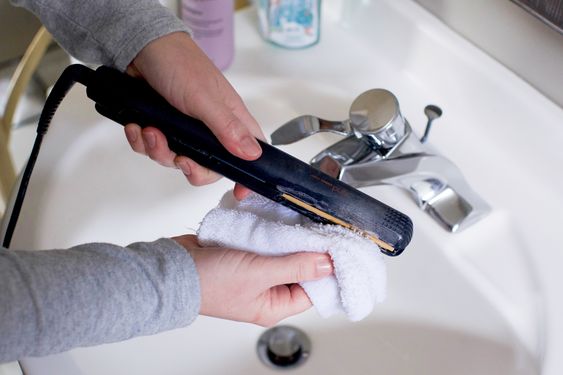Maintain your hair straightener without harsh chemicals. Discover gentle yet effective methods to keep your styling tool pristine.
As a seasoned hairstylist with over a decade of experience, I've witnessed firsthand the transformative power of hair straighteners. These versatile tools can tame frizz, add shine, and create a variety of styles, making them a staple in many beauty routines.
However, like any tool, hair straighteners require proper maintenance to ensure optimal performance and longevity.
While rubbing alcohol is often touted as a cleaning solution for hair straighteners, it can be harsh on the delicate plates and potentially damage them over time.
Fortunately, there are several effective alternatives that can safely remove dirt, product buildup, and other impurities without compromising the integrity of your straightener.

How To Clean Your Hair Straightener Without Rubbing Alcohol
Method 1: Vinegar Solution for Gentle Cleaning
Vinegar, a common household staple, proves to be a gentle yet effective cleaning agent for hair straighteners. To prepare the solution, simply mix equal parts white vinegar and water in a small bowl. Ensure your hair straightener is unplugged and completely cool before proceeding.
Next, dampen a soft, lint-free cloth with the vinegar solution and gently wipe the plates of the straightener, removing any visible dirt or residue. For hard-to-reach areas, use a cotton swab dipped in the solution.
Once the plates are clean, wipe them with a clean, damp cloth to remove any lingering vinegar residue. Allow the straightener to dry completely before using it again.
Method 2: Baking Soda Paste for Stubborn Buildup
Baking soda, another household essential, can tackle stubborn buildup on hair straightener plates.
To create the paste, mix a tablespoon of baking soda with a small amount of water until a thick paste forms. Again, ensure your hair straightener is unplugged and cool before applying the paste.
Using a soft cloth or an old toothbrush, gently apply the baking soda paste to the plates, covering any areas with visible buildup. Allow the paste to sit for a few minutes to loosen the grime.
Then, gently scrub the plates with the cloth or toothbrush to remove the loosened buildup.
Finally, wipe the plates with a clean, damp cloth to remove any baking soda residue, and allow the straightener to dry completely.
Method 3: Specialized Cleaning Products for Convenience
If you prefer a ready-made solution, consider using a specialized hair straightener cleaning product.
These products are formulated specifically for cleaning hair straightener plates without damaging them.
Follow the instructions provided with the cleaning product, which typically involve spraying or wiping the solution onto the plates and then wiping them clean. As always, ensure the straightener is unplugged and cool before using the cleaning product.
Additional Tips for Hair Straightener Care
- Regular cleaning is crucial to prevent buildup and damage to your hair straightener. Aim to clean it after every few uses or more frequently if you use styling products regularly
- For stubborn stains or buildup, repeat the cleaning process as needed. Patience and gentle scrubbing will eventually remove even the most persistent grime.
- Avoid using harsh abrasives or chemicals, such as steel wool or bleach, as these can damage the delicate plates of your hair straightener.
- When not in use, store your hair straightener in a clean, dry place to prevent rust and corrosion. Consider using a heat-resistant storage pouch or case for added protection.
Conclusion: Preserving Your Hair Straightener's Performance
Regular cleaning is an essential part of maintaining your hair straightener's performance and extending its lifespan.
By adopting a regular cleaning routine and using gentle, effective methods, you can keep your hair straightener in top condition, ensuring it continues to deliver salon-worthy results for years to come.
Read More:





